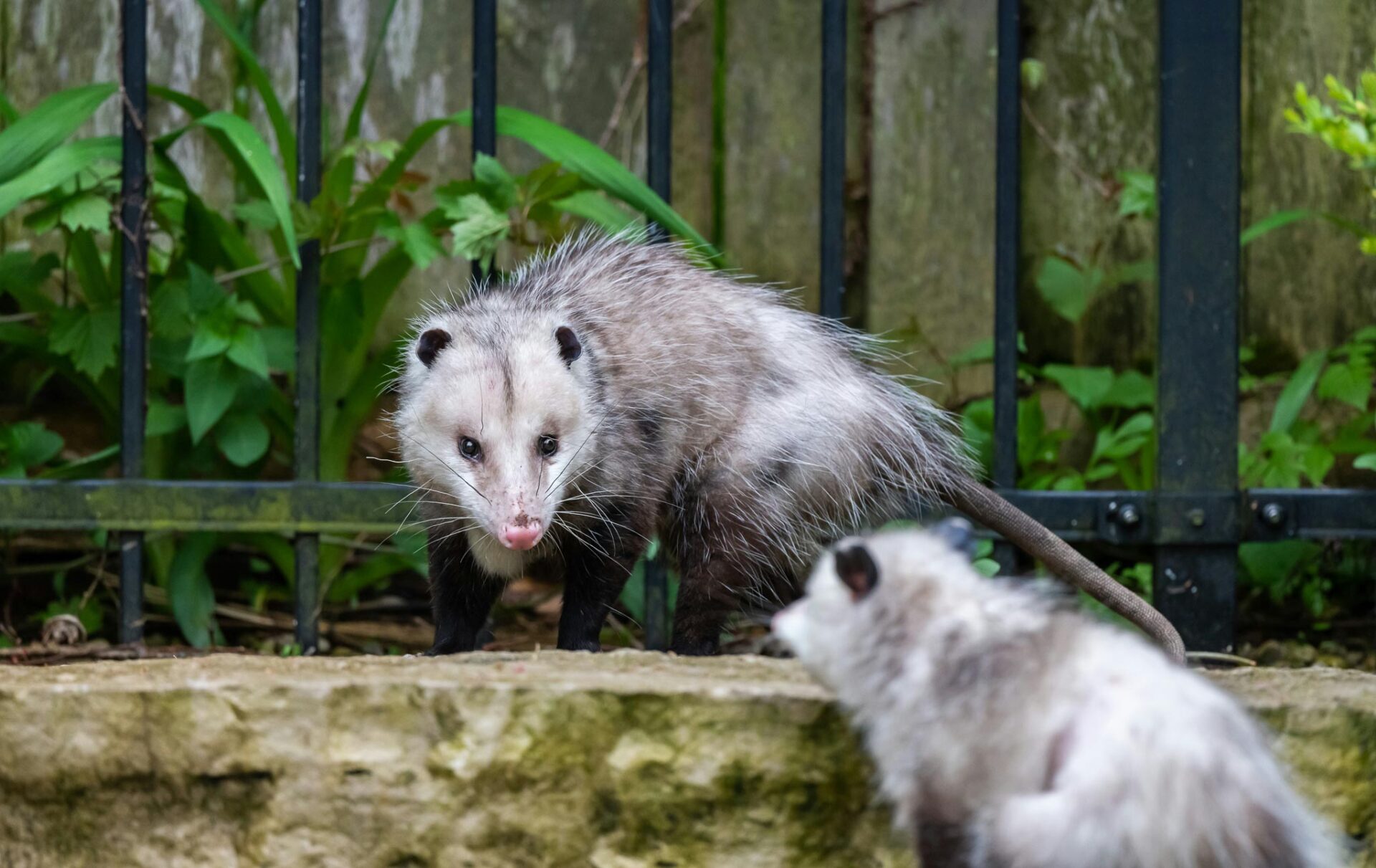Opossum
Introduction
The Virginia opossum (Didelphis virginiana) is North America’s only native marsupial, thriving in Missouri, the Midwest, and across much of the United States. These nocturnal scavengers are highly adaptable, living in urban, suburban, and rural areas. While they play an important ecological role by consuming pests and carrion, opossums can become nuisances when they raid garbage, damage gardens, or take up residence in attics, crawl spaces, or under decks.
Biology

-
Size: 12–20 inches long, with a tail nearly the same length
-
Weight: 4.5–11 pounds
-
Appearance: Coarse grayish fur, pointed snout, white face, and hairless prehensile tail used for balance and climbing
-
Unique Traits:
-
Only marsupial found north of Mexico
-
Have opposable “thumbs” on hind feet
-
Possess 50 teeth—more than any other North American mammal
-
Remarkably resistant to many diseases and snake venoms
-
In the wild, opossums typically live 1–2 years due to predation and environmental hazards, though they may live longer in protected environments.
Behavior and Ecology
Opossums are nocturnal, foraging for food after dark. They are solitary and opportunistic, thriving near human settlements where food is abundant. They den in hollow trees, abandoned burrows, brush piles, garages, or attics.
Signs of opossum activity include:
-
Tracks: Five-toed footprints with opposable hind toes (resembling small handprints)
-
Droppings: Dark, tapered droppings that may contain seeds, fur, or insect parts
-
Nests: Found in sheltered areas, made of leaves, grass, or paper
-
Tail marks: Dragging marks or scratches near entry points
-
Garbage disturbance: Tipped-over cans or rummaged trash
-
Nocturnal noises: Hissing, growling, or rustling at night
Defensive Behavior: When threatened, opossums may “play dead” (thanatosis), releasing a foul odor to deter predators.
Reproduction & Life Cycle
Opossums have one of the shortest gestation periods of any mammal—just 12–14 days. Females give birth to as many as 20 tiny, underdeveloped young, but only about half survive. The young crawl into the mother’s pouch (marsupium) to continue developing for several weeks.
After leaving the pouch, juveniles may ride on the mother’s back until they are independent. Breeding occurs from late winter through summer, and most females have one to two litters per year.
Diet & Adaptation
Opossums are true omnivores and scavengers. Their diet includes:
-
Fruits and berries
-
Insects, snails, and small rodents
-
Carrion (dead animals)
-
Pet food, bird seed, and garbage
This flexibility allows them to thrive in nearly any environment, from forests to suburban backyards. They help control insect and rodent populations but may also raid gardens, compost piles, and trash cans.
Trapping & Control
Trapping Methods
-
-
Live Cage Traps: Humane traps measuring approximately 10–12 inches wide and 32 inches long are effective.
-
Placement: Set near den sites, garbage areas, under decks, or along garden edges. Place on a level surface and secure it to prevent tipping.
-
Best Baits:
-
Fruit (apples, grapes, melons)
-
Cat or dog food
-
Marshmallows
-
Canned tuna or sardines
-
-
Setting the Trap
Follow the instructions that come with the trap to set it safely.
Check the trap frequently, at least twice a day, to reduce stress on the trapped animal.
Handling and Relocation
Wear gloves when handling the trap.
Relocate the opossum at least 5 miles away (check your local laws on relocation).
Release it in a safe, wooded area away from homes and roads.
Aftercare
Clean the trap thoroughly with disinfectant after each use.
Avoid handling the animal directly to reduce risk of bites or diseases.
Opossum exclusion
This is basically, how to keep opossums out of places where they’re not welcome (like your attic, garage, crawl space, or yard).
Here’s a solid guide on opossum exclusion:
1. Identify Entry Points
Look for holes, gaps, or openings around your home (especially near the foundation, roofline, vents, chimneys, or under decks).
Opossums can squeeze through surprisingly small spaces (as small as 4 inches).
2. Seal All Entry Points
Use heavy-duty materials like hardware cloth (1/4-inch mesh metal), steel wool, or metal flashing.
Avoid just using chicken wire or plastic mesh — opossums can chew through those.
Seal vents with metal covers or wire mesh.
Close gaps under doors with door sweeps or weather stripping.
3. Install One-Way Exclusion Doors (if opossums are inside)
If you already have opossums inside a structure, install a one-way door or exclusion flap over the exit hole.
This allows the opossum to leave but not get back in.
Leave the door for several days to ensure all opossums exit.
4. Remove Attractants
Secure garbage cans with tight lids.
Remove pet food or bird seed left outside overnight.
Clear away brush piles, wood stacks, or debris where opossums might hide.
Close off access to compost piles.
5. Trim Trees and Shrubs
Opossums can climb trees to access roofs.
Trim branches at least 6-8 feet away from the house.
6. Use Repellents (optional)
Commercial opossum repellents exist but tend to be temporary.
Some people use ammonia-soaked rags or predator urine as deterrents near entry points.
Be cautious with repellents around pets and kids.
7. Maintain Regular Inspection
After exclusion, regularly check for new damage or attempts to re-enter.